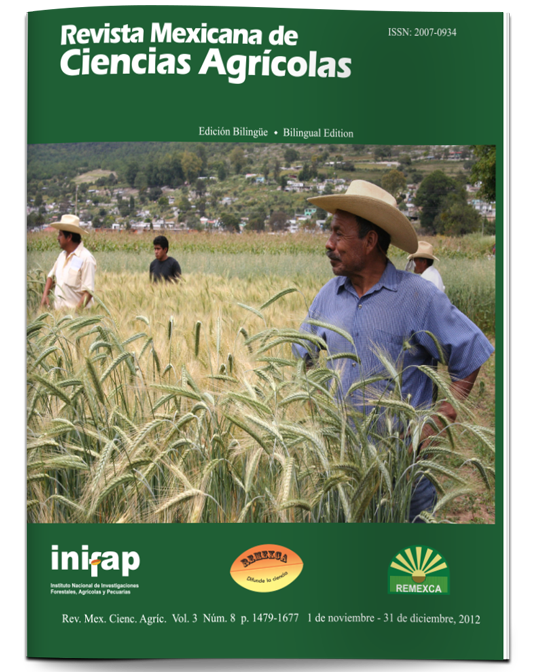Tamesí, new soybean variety for the humid tropic of Mexico
DOI:
https://doi.org/10.29312/remexca.v3i8.1332Keywords:
Glycine max (L.) Merr., soybean, variety, yieldAbstract
Tamesi is a variety of soybean [Glycine max (L.) Merr.] that was originated from a cross between Santa Rosa X H80-2535, held at the INIFAP-C. E. Las Huastecas, the first parent is a variety introduced from Brazil, and the second is a line generated in the genetic breeding program of tropical soybean at INIFAP. This variety is adapted to the rainfed conditions the spring-summer cycle in the humid tropics of Mexico; it has an average yield of 2 602 kg ha-1, which is 17% higher than the variety Huasteca 200 (control), and its cycle is shorter than this variety; the plant is of medium size and resistant to lodging. The seed has 19.25% of oil and 35.3% of protein, and the 100 seed weight is of 16.1 g. Tamesi is of a determinate growth habit, has white f lowers, brown pubescence and seeds with a yellow seed coat and a brown hilum.
Downloads
Downloads
Published
How to Cite
Issue
Section
License
The authors who publish in Revista Mexicana de Ciencias Agrícolas accept the following conditions:
In accordance with copyright laws, Revista Mexicana de Ciencias Agrícolas recognizes and respects the authors’ moral right and ownership of property rights which will be transferred to the journal for dissemination in open access. Invariably, all the authors have to sign a letter of transfer of property rights and of originality of the article to Instituto Nacional de Investigaciones Forestales, Agrícolas y Pecuarias (INIFAP) [National Institute of Forestry, Agricultural and Livestock Research]. The author(s) must pay a fee for the reception of articles before proceeding to editorial review.
All the texts published by Revista Mexicana de Ciencias Agrícolas —with no exception— are distributed under a Creative Commons License Attribution-NonCommercial 4.0 International (CC BY-NC 4.0), which allows third parties to use the publication as long as the work’s authorship and its first publication in this journal are mentioned.
The author(s) can enter into independent and additional contractual agreements for the nonexclusive distribution of the version of the article published in Revista Mexicana de Ciencias Agrícolas (for example include it into an institutional repository or publish it in a book) as long as it is clearly and explicitly indicated that the work was published for the first time in Revista Mexicana de Ciencias Agrícolas.
For all the above, the authors shall send the Letter-transfer of Property Rights for the first publication duly filled in and signed by the author(s). This form must be sent as a PDF file to: revista_atm@yahoo.com.mx; cienciasagricola@inifap.gob.mx; remexca2017@gmail.
This work is licensed under a Creative Commons Attribution-Noncommercial 4.0 International license.



